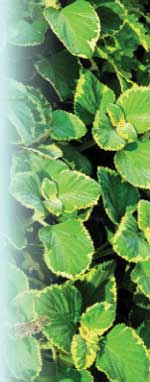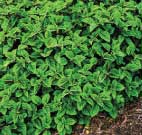Plectranthus Pleases Foliage Lovers
go.ncsu.edu/readext?235981
en Español / em Português
El inglés es el idioma de control de esta página. En la medida en que haya algún conflicto entre la traducción al inglés y la traducción, el inglés prevalece.
Al hacer clic en el enlace de traducción se activa un servicio de traducción gratuito para convertir la página al español. Al igual que con cualquier traducción por Internet, la conversión no es sensible al contexto y puede que no traduzca el texto en su significado original. NC State Extension no garantiza la exactitud del texto traducido. Por favor, tenga en cuenta que algunas aplicaciones y/o servicios pueden no funcionar como se espera cuando se traducen.
Português
Inglês é o idioma de controle desta página. Na medida que haja algum conflito entre o texto original em Inglês e a tradução, o Inglês prevalece.
Ao clicar no link de tradução, um serviço gratuito de tradução será ativado para converter a página para o Português. Como em qualquer tradução pela internet, a conversão não é sensivel ao contexto e pode não ocorrer a tradução para o significado orginal. O serviço de Extensão da Carolina do Norte (NC State Extension) não garante a exatidão do texto traduzido. Por favor, observe que algumas funções ou serviços podem não funcionar como esperado após a tradução.
English
English is the controlling language of this page. To the extent there is any conflict between the English text and the translation, English controls.
Clicking on the translation link activates a free translation service to convert the page to Spanish. As with any Internet translation, the conversion is not context-sensitive and may not translate the text to its original meaning. NC State Extension does not guarantee the accuracy of the translated text. Please note that some applications and/or services may not function as expected when translated.
Collapse ▲
Plectranthus forsteri
Green on Green
Robert E. Lyons ©
The genus Plectranthus is a member of the mint family and commonly grown for its interesting foliage. (The common name is also plectranthus.) These plants have large, succulent, toothed leaves on thick, branching stems and frequently reach 3 feet or more in length. Flowers may not be their strongest ornamental feature but some newer cultivars like ‘Mona Lavender’ can have striking floral displays. Plectranthus is an adaptable and variable genus grown for use as tender perennials in hanging baskets or houseplants. Some species, such as Swedish ivy, are grown specifically for container gardens. Plectranthus is closely related to coleus and salvias.
Plectranthus species are beautiful plants that are very frost sensitive and must either be brought indoors for winter or have cuttings taken for rooting. Plectranthus are very adaptable for garden use. They perform best in well-drained and amended soils where they can establish good root systems, especially if fertilized periodically with a complete, water-soluble product. Poorly drained soils will quickly lead to root rot and overall plant decline. To promote bushy growth, pinch the tips of the shoots occasionally during the early part of the growing season. Plectranthus seem to perform best in protected areas that do not receive direct sun all day. Although they can grow in full sun, their foliage color and plant habit will be at their best with some shade.

Plectranthus ciliatus
Robert E. Lyons ©
The majority of Plectranthus species are easy to propagate from cuttings. Take cuttings in the early fall and root small plants to overwinter indoors. Pest problems for Plectranthus are rarely found but can include whiteflies, aphids and red spider mites during summer months. Diseases include leaf spots, stem rots and root rots.
Plectranthus species are becoming more popular as landscape plants and the JC Raulston Arboretum often has some of the best of the new as well as the more familiar in their gardens. These are generally found in the Entry Bed along Beryl Road.
Diane Ashburn


